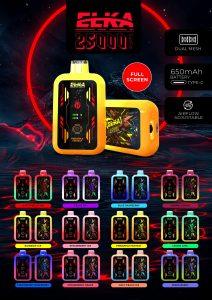Introduction
The Disposable Vape market has experienced explosive growth in recent years, driven by factors such as convenience, affordability, and a wide range of flavor options. However, alongside this growth comes a complex regulatory landscape that poses significant challenges to industry players. In this article, we’ll explore the regulatory hurdles confronting the Disposable Vape industry and discuss strategies for navigating them effectively.
Regulatory Framework Overview
The regulatory environment surrounding Disposable Vapes is multifaceted and constantly evolving. In the United States, the Food and Drug Administration (FDA) oversees the regulation of tobacco products, including e-cigarettes. However, the regulatory framework for Disposable Vapes remains somewhat fragmented, with different rules and requirements at the federal, state, and local levels.
Product Standardization Challenges
One of the primary regulatory challenges facing the Disposable Vape industry is the lack of standardized regulations for product quality and safety. Unlike traditional tobacco products, which are subject to strict manufacturing standards, Disposable Vapes operate in a relatively unregulated space. This lack of uniformity can lead to inconsistencies in product quality and safety across different brands and manufacturers.
Age Restrictions and Access Control
Another significant regulatory hurdle for the Disposable Vape industry is the enforcement of age restrictions and access control measures. Many countries and regions have implemented laws prohibiting the sale of vaping products to minors, typically defined as individuals under the age of 18 or 21, depending on local regulations. However, enforcing these age restrictions can be challenging, particularly in online retail environments where age verification processes may be less stringent.
Advertising Regulations
Advertising regulations pose another significant challenge for the Disposable Vape industry. While marketing plays a crucial role in driving consumer awareness and brand loyalty, regulators have implemented strict guidelines to prevent the promotion of vaping products to underage individuals and to mitigate potential public health risks associated with their use. In many jurisdictions, Disposable Vape manufacturers are prohibited from using certain marketing tactics that could appeal to minors, such as using cartoon characters or promoting flavors that are likely to appeal to younger demographics.
Labeling and Packaging Requirements
Labeling and packaging requirements present another regulatory challenge for the Disposable Vape industry. Regulators often mandate that Disposable Vape products include specific labeling elements, such as health warnings, ingredient lists, and nicotine content disclosures. Ensuring compliance with these requirements while maintaining product appeal and brand identity can be a delicate balancing act for manufacturers.
International Regulatory Variances
The Disposable Vape industry must contend with significant variations in regulatory frameworks between different countries and regions. While some jurisdictions have implemented stringent regulations to restrict the sale and marketing of vaping products, others have taken a more lenient approach or have yet to establish comprehensive regulatory measures. These discrepancies can create challenges for Disposable Vape manufacturers seeking to expand their global presence.
Compliance and Enforcement Challenges
Compliance with regulatory requirements and enforcement pose significant challenges for Disposable Vape manufacturers. Given the evolving nature of regulations and the complexity of the global marketplace, ensuring adherence to all relevant laws and standards can be a daunting task. Manufacturers must invest in robust compliance programs and internal controls to monitor and address regulatory changes effectively.
Conclusion
In conclusion, the Disposable Vape industry faces numerous regulatory hurdles that pose significant challenges to manufacturers, retailers, and consumers alike. Despite these challenges, the Disposable Vape industry remains resilient, driven by consumer demand for convenient and accessible alternatives to traditional tobacco products. By working collaboratively with regulators and adopting a proactive approach to compliance, industry stakeholders can help shape a regulatory framework that promotes both public health and industry growth.
Thank you for reading our exploration of the regulatory challenges facing the Disposable Vape industry. Stay informed, stay compliant, and stay tuned for further developments in this dynamic and evolving sector.






